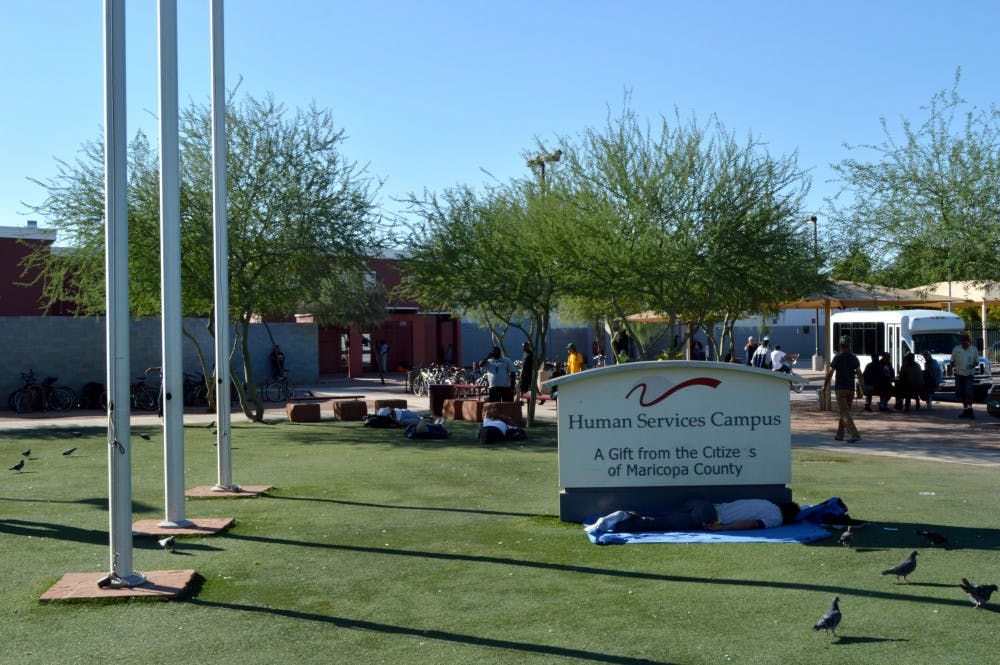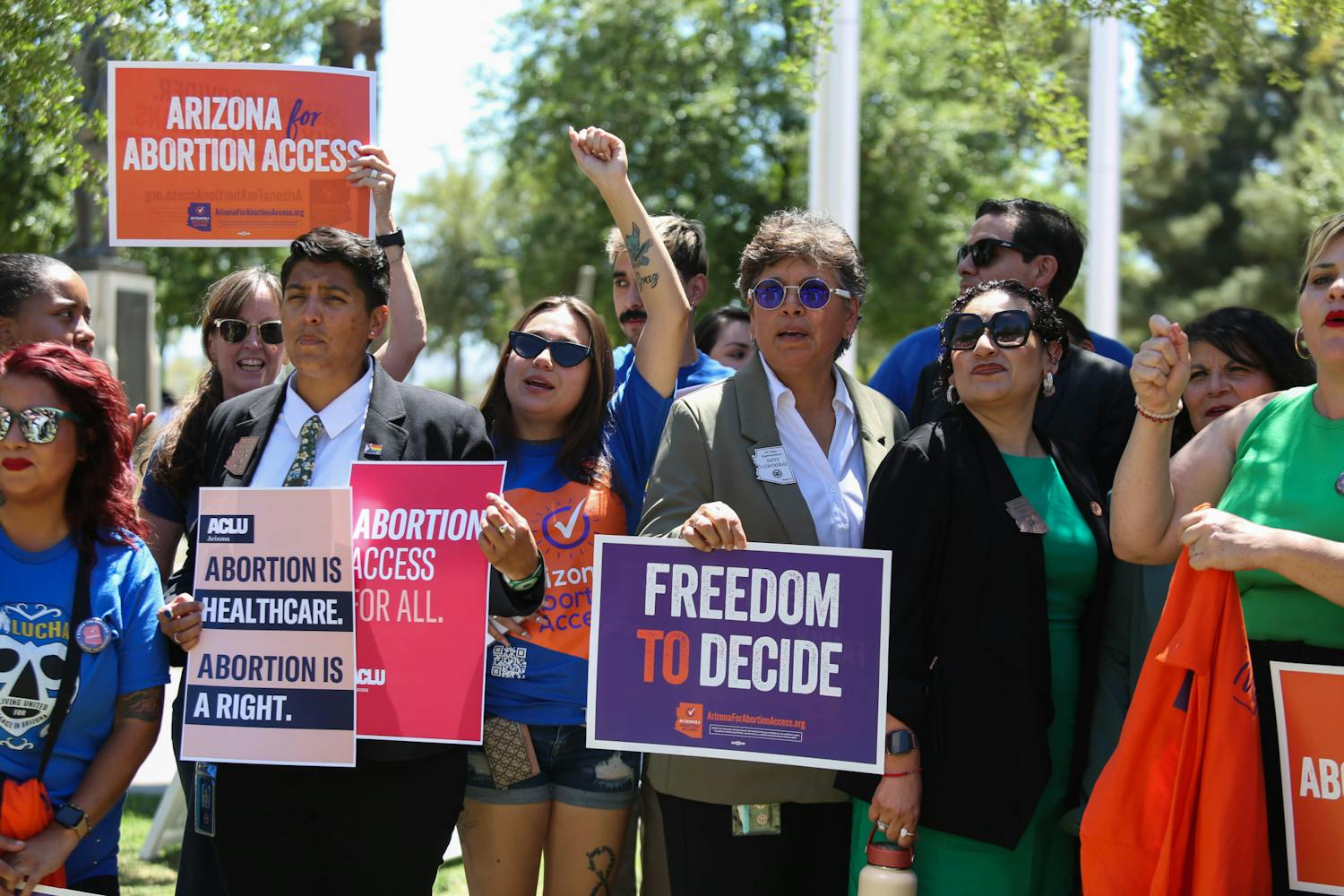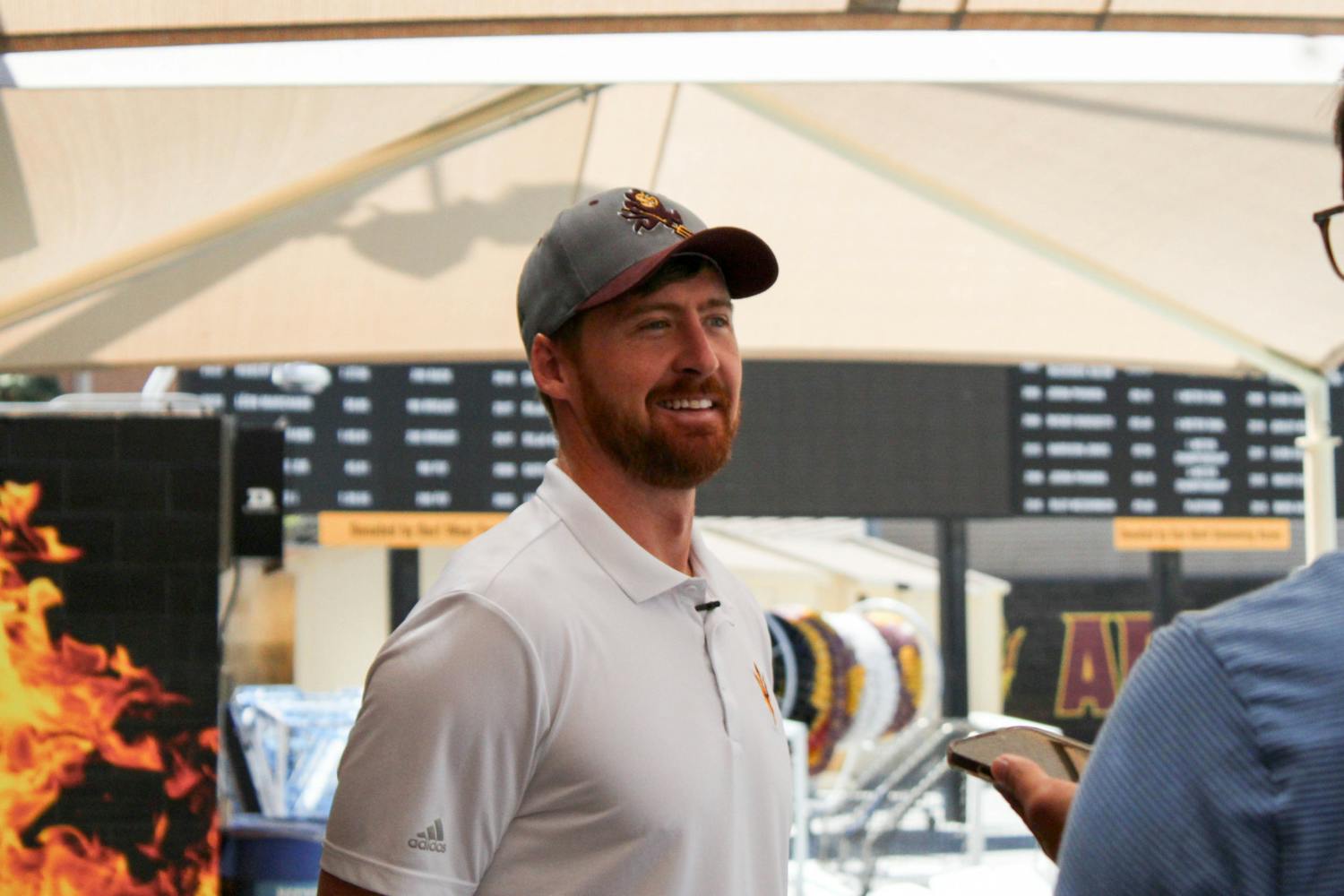 Students from ASU, NAU and UA will join together to open a clinic for the homeless and under-served populations of Phoenix. The clinic will operate out of the Human Services Campus on 12th Avenue and Madison Street in Phoenix. (Photo by Corey Malecka)
Students from ASU, NAU and UA will join together to open a clinic for the homeless and under-served populations of Phoenix. The clinic will operate out of the Human Services Campus on 12th Avenue and Madison Street in Phoenix. (Photo by Corey Malecka)A group of student, faculty and community volunteers is preparing to open the first student-run health care clinic for homeless and underserved people in Arizona.
This project, called Student Health Outreach for Wellness, will combine departments from ASU, UA and NAU and is set to open in spring of 2014, said Timothy Ellis, co-director of the initiative.
“The primary goal of the SHOW is to build a collaboration between the three universities in an inter-professional setting while also providing students an educational foundation for their professional careers,” he said.
The clinic will generally care for patients on a walk-in basis, he said.
Professor Pamela Thompson, chair of the advisory board, said a group of students came together around May 2013 to create a project that would engage other students in service learning and allow them to give back to the community.
“When we looked at how to do this, we don’t have all of the disciplines that you would really need to go about doing a project like this,” she said.
ASU students decided to reach out to the two other state universities after discovering that they would need a broader scope to create and operate the clinic, Thompson said.
“Collectively, when we put all of our resources of our students together, we can have this holistic approach to health and wellness by bringing multiple clinical disciples together,” she said.
The clinic will operate out of an existing campus located on 12th Avenue and Madison Street in Phoenix.
Thompson said the existing clinic is operated in part by Maricopa County but only offers services Monday through Friday during regular office hours.
She said the clinic will start by operating on Saturdays.
There are more than 500 homeless people around the area on any given day, so the challenge was to operate during the weekends, Thompson said.
“So really, we thought, here we’ve got a social issue right in our own backyard and we have the resources of these students in the universities," she said. "Let’s come together and see if we can’t make some impact.”
The students
The SHOW clinic will focus on a variety of disciplines related to health, Thompson said.
“I think the other thing that kind of sets us apart from other student-run free clinic models is that we really kind of saw health as being broader than just the core health disciplines that you might thing of, like medicine or physical therapy,” she said.
The clinic will involve students from nursing, computer science, business, journalism and more majors, Thompson said.
The project will need people to market the clinic and design a sustainable business model among other tasks, she added.
Thompson said students designed the clinic's logo and a website that will launch at the end of the month.
“We’re really trying to actively recruit a diverse group of students to the project,” she said.
Although the students manage most of the planning, an advisory board will help them if they run into any roadblocks or need assistance, Thompson said.
“Our role as the faculty committee is really to provide just some oversight, but the students are actually planning and operating the project,” she said.
The student volunteers are broken into nine committees, each acting in different roles in the project. These committees include communications and recruitment, technology, policy and procedures and fund development and sustainability.
Two faculty members head each committee, Thompson said.
“We really want the students to take the leadership in learning how to not only build the project but to operate the project as well, and hopefully then to grow the project,” she said.
The team is working on recruiting more students to fill out the committees and making lists of volunteers that will actually run the clinic once it opens, Thompson said.
“On any given Saturday, there will probably be about 30-plus student volunteers working,” she said.
Sandy Sutton, volunteer coordinator for SHOW and social work student at ASU, manages the volunteers. Over the past week, the team has reached out to Barrett, the Honors College and several clubs related to health care.
“We’ve had a tremendous response from Barrett,” she said. “They’ve been flooding our inbox.”
Sutton emphasized there are many different areas needed for SHOW, such as business, journalism and law.
“We need people from various professions and at various levels to help with many different roles,” she said.
Sutton said SHOW requires people from multiple disciplines and from all different skills sets.
“We have something going on that virtually every level can do,” she said.
The policy and procedures committee is in the process of writing out “who can act in what roles,” Sutton said.
These details will act as job descriptions, she said, as they will lay out the responsibilities and tasks each can do.
Serving the Homeless
Thompson said the clinic will offer health services to the homeless and underserved while also offering special programming.
“We have this whole other part of the campus where there’s free space, so we’re also looking to run a health and wellness program,” she said.
Other programs the team hopes to implement will likely lead with health promotion and prevention, social engagement and recreation, Thompson said.
There will be an outreach team of students, Thompson said, that will engage the walk-in patient. A triage team of a nurse and social worker will then assess the patient’s needs and direct them to the appropriate caregiver.
“We want to be able to look at their needs holistically,” she said. “We want it to be a very welcoming atmosphere.”
Licensed community and faculty providers will supervise the students when they treat and advise patients, Thompson said.
A Unified Project
The three universities involved have provided equal funding for the project, she said. Each school also provided a director for the project: UA provided a medical director, NAU an administrative and ASU another medical director.
Thompson said this is so each school has an equal stake in the project.
The team is also applying for grants and working with the College of Nursing and Healthcare Innovation fund development. She said the Woodard Foundation also provided funding for the project.
“One of the big things we are really focused on in creating this project is meeting a very sustainable business model for how we operate,” she said. “Obviously, we want to provide good services, but also (have) a very good return on investment.”
Thompson said SHOW hopes to expand in the future, opening up on Sundays and even on weeknights, after the existing clinics close.
“We’re not looking to reinvent the wheel; we want to augment what is happening,” she said.
SHOW-ing Students How to Serve
Ellis said training and orientation will begin toward the end of this year and the beginning of next year. During that time, volunteers will start to mimic the roles they will have in the clinic.
“Right now we are actually working on developing the foundation, and then we’ll hopefully get involved in practicing and implementation so that students aren’t caught off guard we when we go live,” he said.
Thompson said the clinic offers students the opportunity to work in various disciplines while also gaining clinical experience.
“Students really learn about innovative ways to deliver health and wellness services,” she said. “We’re also really interested in the students getting exposure to diverse populations and populations in need.”
This gives students the access to first-hand experience with a population in need, Thompson said.
“It’s a chance for students to get that first hands-on experience,” she said.
The clinic will act as a “learning laboratory,” Thompson said. It gives students the room to research, learn about health care delivery, and ultimately look at new ways of doing things.
“We’d like to be one of the leaders in student-run health and wellness clinics in the county,” she said. “We’re aiming high.”
Reach the reporter at savannah.harrelson@asu.edu or follow her on Twitter @savannahleeh




